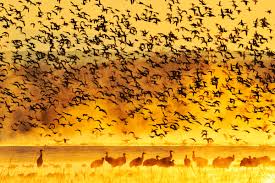
Breaking News
6.5x55 Swedish vs. 6.5 Creedmoor: The New 6.5mm Hotness
Best 7mm PRC Ammo: Hunting and Long-Distance Target Shooting
 Christmas Truce of 1914, World War I - For Sharing, For Peace
Christmas Truce of 1914, World War I - For Sharing, For Peace
Top Tech News
 EngineAI T800: Born to Disrupt! #EngineAI #robotics #newtechnology #newproduct
EngineAI T800: Born to Disrupt! #EngineAI #robotics #newtechnology #newproduct
 This Silicon Anode Breakthrough Could Mark A Turning Point For EV Batteries [Update]
This Silicon Anode Breakthrough Could Mark A Turning Point For EV Batteries [Update]
 Travel gadget promises to dry and iron your clothes – totally hands-free
Travel gadget promises to dry and iron your clothes – totally hands-free
 Perfect Aircrete, Kitchen Ingredients.
Perfect Aircrete, Kitchen Ingredients.
 Futuristic pixel-raising display lets you feel what's onscreen
Futuristic pixel-raising display lets you feel what's onscreen
 Cutting-Edge Facility Generates Pure Water and Hydrogen Fuel from Seawater for Mere Pennies
Cutting-Edge Facility Generates Pure Water and Hydrogen Fuel from Seawater for Mere Pennies
 This tiny dev board is packed with features for ambitious makers
This tiny dev board is packed with features for ambitious makers
 Scientists Discover Gel to Regrow Tooth Enamel
Scientists Discover Gel to Regrow Tooth Enamel
 Vitamin C and Dandelion Root Killing Cancer Cells -- as Former CDC Director Calls for COVID-19...
Vitamin C and Dandelion Root Killing Cancer Cells -- as Former CDC Director Calls for COVID-19...
 Galactic Brain: US firm plans space-based data centers, power grid to challenge China
Galactic Brain: US firm plans space-based data centers, power grid to challenge China
This animated globe showing animal migration routes is mesmerizing

Animals have don't need passports or visas, and they don't care about countries' borders — and that's vividly illustrated by this animated globe.
It shows migration routes for about 150 species based on tracking data shared by over 11,000 researchers from around the world. The pink lines follow the movement of animals covering at least 310 miles in one direction for at least 45 days, combining about 8,000 tracks collected over a period of about 10 years. You can see lines extend from Africa to Turkey, all the way up to Europe, as well as from Canada to the United States, and vice versa.
Tracking devices have been used by scientists for a long time to study how animals move within local regions and migrate across oceans and continents. In the past, scientists used to tie bands around birds' legs or use radio transmitters. Today, trackers and tags use GPS and satellites to record data down to the second. The information can help us understand how animals hunt, how they are responding to climate change, or habitat fragmentation — or even just why baby sharks hang out at LA beaches.

 The State's Last Stand
The State's Last Stand


